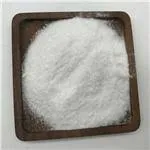Pentoxifylline A Comprehensive Overview
Pentoxifylline, a xanthine derivative, is primarily used as a therapeutic agent to enhance blood flow and improve microcirculation in various medical conditions. Since its introduction as a medication, it has garnered attention for its potential benefits in treating peripheral vascular disease, improving oxygen delivery to tissues, and reducing the symptoms associated with intermittent claudication.
Mechanism of Action
The pharmacological efficacy of pentoxifylline stems from its ability to modify red blood cell (RBC) deformability and reduce blood viscosity. This ultimately leads to improved microcirculation and enhanced oxygen transport to tissues. By increasing the flexibility of RBCs, pentoxifylline allows them to traverse smaller capillaries more efficiently. Additionally, it exhibits anti-inflammatory properties which can further aid in reducing the vascular complications associated with various diseases.
Indications
Pentoxifylline is primarily indicated for the treatment of intermittent claudication, a condition characterized by muscle pain due to inadequate blood flow during physical activity. Patients suffering from peripheral artery disease (PAD) often experience claudication, and pentoxifylline can significantly improve walking distance and overall quality of life for these individuals.
In addition to its use in PAD, pentoxifylline has been used off-label for other conditions. These include diabetic foot ulcers and chronic venous insufficiency, where improved circulation can enhance healing and mitigate symptoms. Some studies also suggest potential benefits of pentoxifylline in conditions like acute respiratory distress syndrome (ARDS) and various inflammatory disorders due to its anti-inflammatory effects.
Dosage and Administration
pentoxifylline tab

Pentoxifylline is typically available in oral tablet form and is administered three times a day with meals to maximize absorption and minimize gastrointestinal side effects. The usual starting dose is 400 mg, which may be adjusted based on the patient's response and any potential side effects. It is crucial for patients to adhere to the prescribed regimen and consult their healthcare provider for any necessary adjustments.
Side Effects
Like any medication, pentoxifylline is not without side effects. Commonly reported adverse effects include gastrointestinal disturbances such as nausea, vomiting, and diarrhea. Other side effects may include dizziness, headache, and increased heart rate. Rarely, pentoxifylline may cause serious side effects, such as bleeding complications, especially in patients on anticoagulant therapy. Therefore, it is essential for patients to be monitored regularly by their healthcare providers while on this medication.
Contraindications and Precautions
Pentoxifylline should be used with caution in patients with a history of bleeding disorders, recent heart attack, or those who are pregnant or breastfeeding. Patients on anticoagulant therapy must be carefully monitored to avoid potential interactions that could increase the risk of bleeding. Discussing personal and family medical history with a healthcare provider before initiating therapy is crucial for ensuring the safety and efficacy of pentoxifylline.
Conclusion
As an effective treatment for intermittent claudication and other vascular conditions, pentoxifylline has played a significant role in improving the quality of life for many patients. Its ability to enhance microcirculation, reduce blood viscosity, and exert anti-inflammatory effects makes it a valuable tool in the management of peripheral artery disease and related conditions. However, like any medication, awareness of its potential side effects, contraindications, and the necessity for ongoing monitoring is vital. Patients considering pentoxifylline therapy should have an open dialogue with their healthcare providers to ensure optimal treatment outcomes.
Through ongoing research and clinical experience, pentoxifylline continues to be evaluated, with the hope of expanding its applications and enhancing patient care in vascular health.

